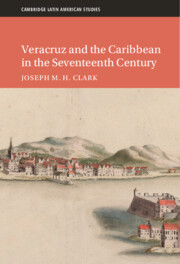Book contents
- Veracruz and the Caribbean in the Seventeenth Century
- CAMBRIDGE LATIN AMERICAN STUDIES
- Veracruz and the Caribbean in the Seventeenth Century
- Copyright page
- Dedication
- Contents
- Figures
- Maps
- Tables
- Acknowledgments
- Note on the Text
- Abbreviations
- Maps
- Introduction
- Part I Building the Mexican-Caribbean World
- Part II The Caribbean in Veracruz
- 5 After the Slave Trade: Nation, Ethnicity, and Mobility After 1640
- 6 Practice and Community in a Spiritual Borderland
- 7 Caribbean Defenses, the Free-Black Militia, and Regional Consciousness
- Conclusion The Mexican Archipelago
- Appendices
- Bibliography
- Index
- Cambridge Latin American Studies
6 - Practice and Community in a Spiritual Borderland
from Part II - The Caribbean in Veracruz
Published online by Cambridge University Press: 19 January 2023
- Veracruz and the Caribbean in the Seventeenth Century
- CAMBRIDGE LATIN AMERICAN STUDIES
- Veracruz and the Caribbean in the Seventeenth Century
- Copyright page
- Dedication
- Contents
- Figures
- Maps
- Tables
- Acknowledgments
- Note on the Text
- Abbreviations
- Maps
- Introduction
- Part I Building the Mexican-Caribbean World
- Part II The Caribbean in Veracruz
- 5 After the Slave Trade: Nation, Ethnicity, and Mobility After 1640
- 6 Practice and Community in a Spiritual Borderland
- 7 Caribbean Defenses, the Free-Black Militia, and Regional Consciousness
- Conclusion The Mexican Archipelago
- Appendices
- Bibliography
- Index
- Cambridge Latin American Studies
Summary
Chapter 6 examines the role of mobility in Veracruz’s distinctive social and cultural landscape, focusing on how individuals moving between Veracruz and other ports established intercolonial networks and developed informal religious communities. In a series of case studies based on investigations of the Mexican Inquisition, the chapter considers border-crossing associations of free-black women, using their cases to demonstrate both Veracruz’s remarkable religious diversity and the occasionally surprising mobility of its residents. While heterodoxy was undoubtedly common in the early modern Atlantic, I demonstrate how the Mexican-Caribbean world conditioned particular religious practices in Veracruz. Describing Veracruz as a spiritual borderland, I argue people from a variety of backgrounds understood the city as a place where the ability to come and go with relative ease created overlapping systems of power and, consequently, space to articulate distinctive ideologies.
Keywords
- Type
- Chapter
- Information
- Veracruz and the Caribbean in the Seventeenth Century , pp. 192 - 225Publisher: Cambridge University PressPrint publication year: 2023

